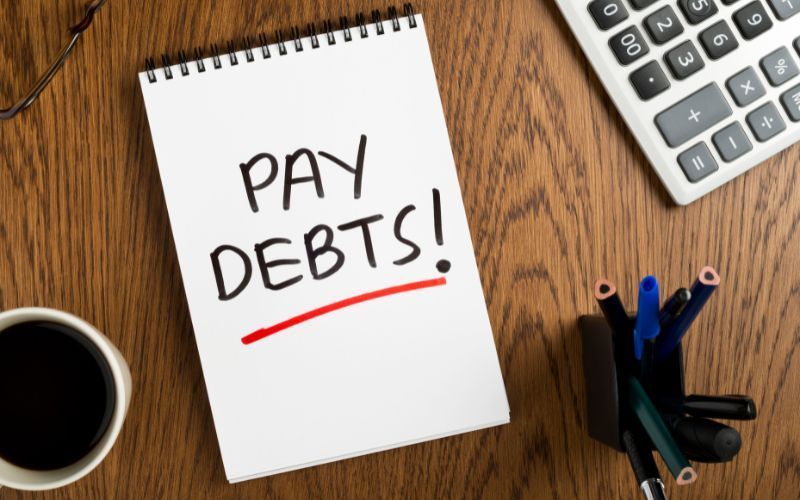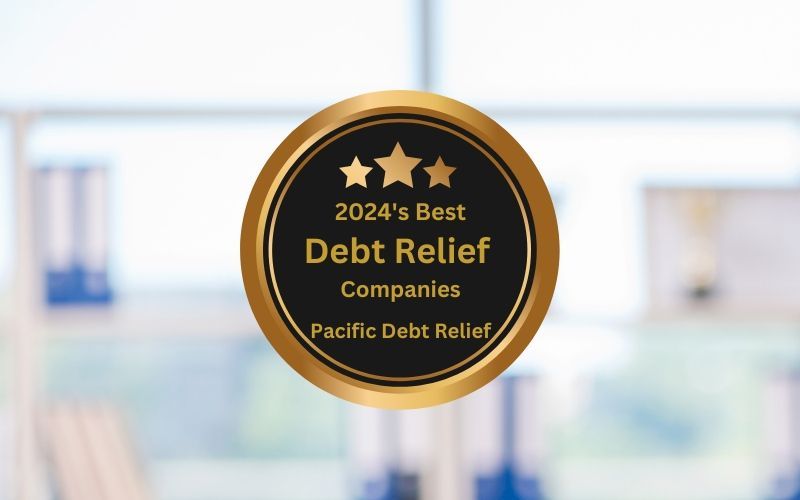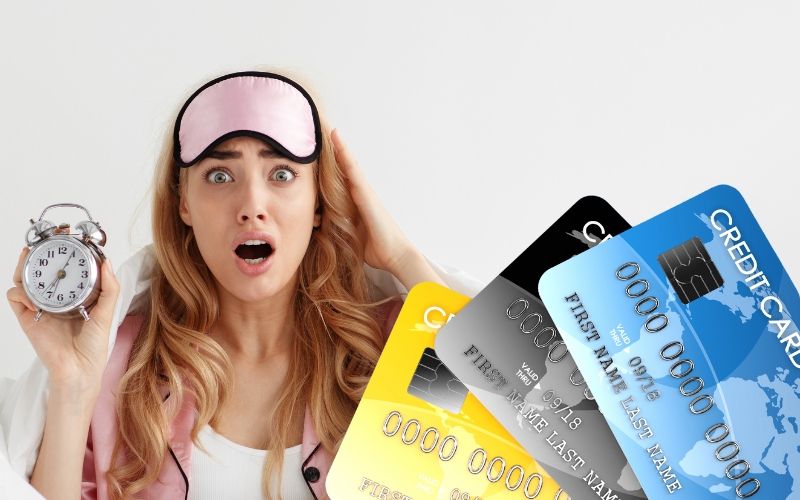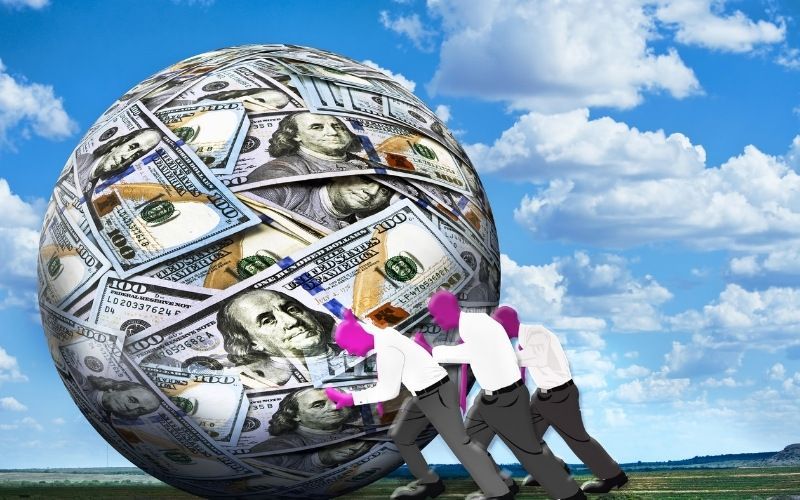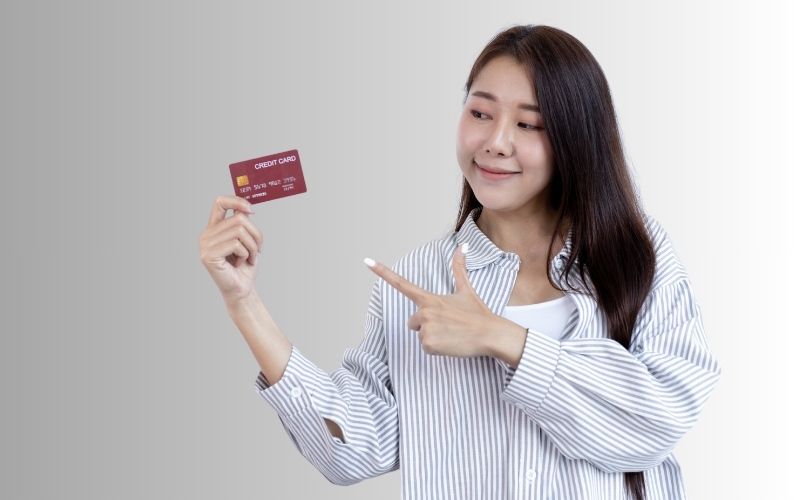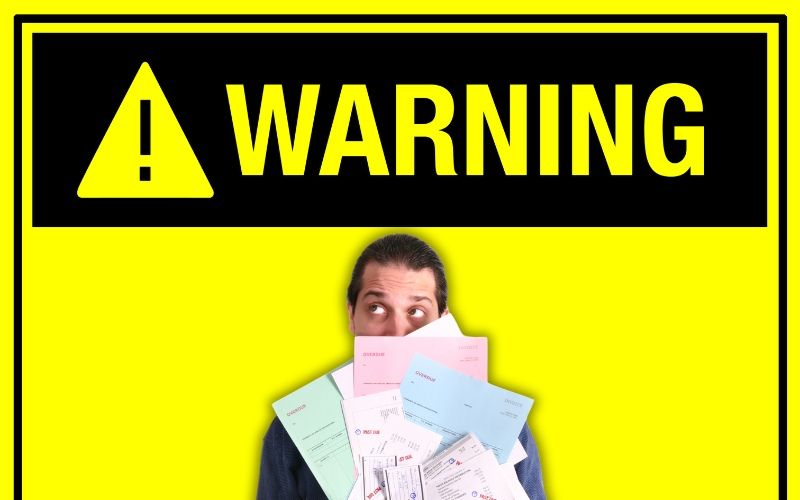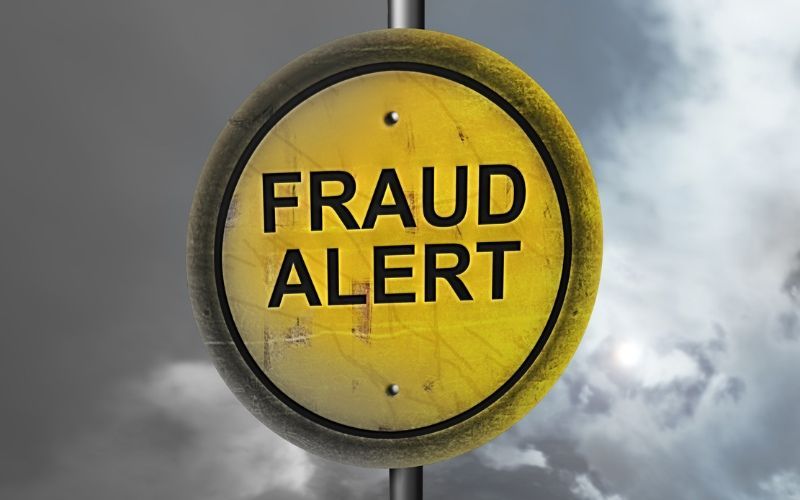Achieving Financial Freedom: Tips On How To Pay Off Debts
Proven Techniques for Paying Off Debt
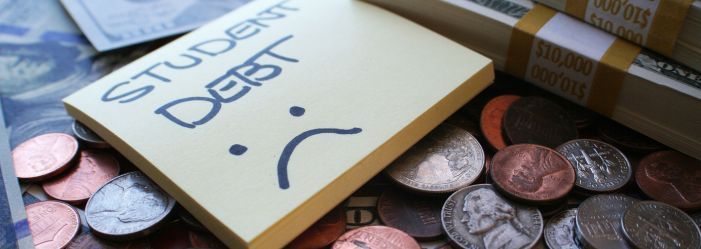
Debt can be a significant source of stress and financial burden for many people. Whether it's credit card debt, student loans, or a mortgage, paying off debt can feel like an uphill battle.
However, with the right strategies and mindset, it is possible to take control of your finances and become debt-free. In this article, we'll explore some practical tips on how to pay off debt and achieve financial freedom.
From creating a budget to negotiating with creditors, these tips will help you develop a plan to pay off your debts and improve your financial well-being.
Assess Your Situation
Your first step in getting debt under control is to understand debt and make a plan to pay off your balances.
Secured Debt
Secured debt is 'secured' by assets. These include mortgage, auto loan, and home equity loans. The benefit of a secured loan is lower interest rates and a set term to pay off the loan.
The downside of secured debt is that defaulting on the loan allows the creditor to foreclose on your home or repossess the car.
Unsecured Debt
Unsecured debt includes most personal loans and revolving credit like credit cards. Interest rates tend to be higher and are based in part on your credit report and history.
There are more distinctions like fixed interest rate versus variable interest, but these are the two most important for beginning to understand your situation.
Listing Out Debt
Your next step is to write down the name of the creditor, type, amount owed, monthly payment amount, interest rate, payment date, and if you are behind in payments.
Separate out the secured loans. Since these are generally necessities, they get dealt with last.
Add up all your unsecured debts and see how much you need to pay each month.
Create a Budget
Next, create a budget. These can be as simple or as complex as you want. The main goal is to understand your spending habits, and your monthly bills.
We have many blogs on how to budget, types of budgets, and budgeting apps. To get more detail, click one of these links:
- How to Budget
- Budgeting Apps
If your monthly income minus monthly expenses is positive (yay!) or negative (boo!), you can now make a plan. If positive, decide where to spend extra money in order to pay off your debt quickly.
If negative, you need to cut down on expenses to save money. We will discuss that later in the blog.
The next step is to Stop Using Your Credit Cards. If you cannot survive without credit cards, you must cut a lot of expenses very quickly and get a new source of income to get enough money to pay your bills.
Let's assume you have extra cash.
Prioritize Highest-Interest Rate Debt
Now that you are not adding to your credit card debt, you have a chance to pay off your credit card debt.
Sort your debt by interest rate. Your goal is to pay off the highest interest debt quickly. Any additional money goes into the highest interest debt while maintaining payments on all other debt.
What is High Interest Debt?
The definition of high interest depends on which expert you ask. Many say that anything over 14% is high interest, making the current credit card interest rate of 20% a high interest debt.
The reason to focus on paying off higher interest balances is that it costs you a lot. Since the highest interest debts tend to be credit cards, understanding how they work is vital.
For more detail, consult:
The short version is that not paying off credit cards in full each month immediately means that you are charged interest on that revolving amount. If you do not pay the credit card debt in the second month, you pay interest on the old interest charges and the old credit card balances, and any new charges.
Let's look at some numbers.
- Credit card balance: $5,000
- Interest rate: 14%
- Minimum payment: $104
- Time to Pay off: 71 months (5.9 years)
- The total amount paid: $7,379
Now compare that to high-interest rate debt.
- Credit card balance: $5,000
- Interest rate: 20%
- Minimum payment: $104
- Time to Pay off: 98 months (8.1 years)
- The total amount paid: $10,166
Using this example, it should be very clear that high-interest debt will cost a fortune and it is extremely important to pay it off.
Making Payments on High Credit Card Debt
Your goal is to put as much money as possible toward the highest interest debt while continuing to make the minimum payment on all other debt (the Avalanche method).
Let's look at what happens if you add an extra $50 to the payment.
- Credit card balance: $5,000
- Interest rate: 20%
- Minimum payment: $104 now with extra: $154
- Time to Pay off: 98 months (8.1 years) now 48 months (4 years)
- The total amount paid: $10,166 now a total: $7,257
That $50 makes a significant difference in your repayment method.
Let's look at some ways to help free up some cash.
Twice a Month Payments
If you cannot afford extra on the credit card's due date, but you can make an extra payment during the month, you can certainly do that. The effect is exactly the same.
Move the Due Date
If you cannot make a payment on the due date, contact the company and ask them to move the due date to a more convenient date. Get it in writing.
Pay off One Smaller Bill
Paying off the smallest debt first (debt snowball method) can free up more money to put down on the high-interest debt (avalanche method). You can alternate this - small bill or debt snowball method, high interest (avalanche method), small bill, high interest.
Negotiate a Lower Interest Rate
If you have a good track record of paying, credit card companies might be willing to decrease your interest rate for a time. Get it in writing and pay as much as you can during the decrease.
Unexpected Money
Any extra money should go immediately toward paying down your high interest debt.
If you need more help, look at some of the following strategies.
Look for Ways to Increase Income
Increasing income is a pretty obvious solution. You need more coming in than going out. Once you have increased your income, 100% of that goes to pay credit card debt while you learn to budget.
Here are some suggestions for ways to increase your income:
- Look for a second job
- Ask for a raise at work
- Pick up gig work like Uber, mowing shoveling, etc
- Rent out a room
- Sell any unused or stored possessions
- Temporarily stop eating out, going to coffee shops, buying clothes, etc.
All of these can help you to raise extra income. Just remember, all of it is applied to your debt. Once the debt is under control, quit or add that money to a savings account to avoid credit cards in the future.
Reduce Expenses
Your budget can help reduce expenses. You have a better idea of where your money is going and where to cut costs.
Here are some ways to reduce expenses:
- Shop by the week or month for groceries, use coupons for stuff you buy
- Shop at consignment stores for clothing
- Mortgage or rent - would selling or moving to a cheaper option make sense?
- Car loan - can you sell it and get something less expensive?
- Cut streaming services to one or two
- Limit eating out/take out to once a month
- If you have access to public transportation, use that
- Look for less expensive internet, cell phone, insurance, etc
The goal is to cut your expenses for a short period of time. Once your debt is under control, you can then add luxuries as your budget allows.
Any extra money saved by cutting expenses is applied to your high interest balance.
Negotiate with Lenders
Sometimes lenders will work with you. They would rather get part of what you owe rather than send you to collections or lose it in a bankruptcy settlement.
Ask for:
- Lowered interest rate
- Better due date
- Longer terms (on personal loans)
- Debt Settlement, where they forgive some of the debt
Call or email the company. Be respectful and detail your situation. Ask for help. Just get it in writing and keep your end of the bargain.
Avoid More Taking On More Debt
You cannot get out of a hole if you keep digging at it. You must first put down the shovel. In other words, you absolutely cannot take on more debt while trying to get out of debt.
Things to stop:
- Using credit cards (save up for big purchases and set up an emergency fund)
- Stop blowing money on things you do not need
Debt Consolidation
In addition to budgeting and extra payments, there are other ways to pay down debt. Debt consolidation may be a solution.
You take out a debt consolidation loan or balance transfer credit card that will pay off all or most of your unsecured debts. For this to be successful, you must:
- have good to excellent credit
- qualify for low interest debt consolidation loans (lower than your lowest existing interest rate)
- make monthly payments on the new personal loan
- want one monthly payment
- not spend the loan money on purchases
- pay off the balance transfer credit card during the promotional period
Debt Settlement
Debt settlement involves negotiating with creditors to lower the amount due. You then pay that amount in full. Debt settlement works for people:
- considering bankruptcy
- with over $10,000 in credit card accounts
- with bad or poor credit ratings
- with trouble making minimum payments
There can be two drawbacks to debt settlement. First, it can damage your credit rating. Since most candidates already have trashed credit scores, it doesn't really matter. The second is that the IRS may consider debt settlement as a form of income and there may be a tax liability.
Debt settlement requires an immense amount of time and patience in order to deal with the creditors and paperwork. It's recommended to work with a professional debt settlement company since they have established creditor relationships and open lines of communication already in place. This will save you endless hours.
Pacific Debt Relief
If you think the debt settlement looks like a good option, contact the professionals at Pacific Debt Relief, Inc. We are a trusted debt relief company with more than 22 years in the business.
Since our debt relief program is not for everyone, we help you understand all options from credit counseling to consolidation to bankruptcy.
You can enroll in our award-winning program or we refer you to a trusted partner. We offer a FREE consultation to go over your situation.
-
How long does it take to pay off debt?
The length of time depends on various factors, such as the amount of debt, income, and the repayment plan. Create a realistic repayment plan and stick to it to pay off debt as quickly as possible.
-
Is debt consolidation a good option?
Debt consolidation can be a good option if you have high-interest debt and multiple payments each month. Do your research and find a reputable company that offers fair terms and fees.
For more information about debt consolidation here to see if it is right for you!
-
What if I can't make my minimum payments?
If you struggle to make minimum payments, contact your creditors as soon as possible. They may be willing to set up a repayment plan or offer solutions to help avoid defaulting.
Learn about the true cost of making minimum credit card payments.
-
Should I focus on paying off my smallest debts first or my highest-interest debts first?
Some people prefer to pay off the smallest debts first for a sense of accomplishment, organization, and motivation. Others prefer to focus on the highest-interest debts first to save on interest payments. Choose a repayment strategy that works best for you and your financial goals.
-
Can Pacific Debt Relief help me pay off my debt?
Yes, Pacific Debt Relief is a trusted debt relief company with services to help consumers pay off debt. Our experienced debt counselors provide personalized solutions and support to help you achieve your financial goals. Our outstanding customer reviews and video testimonials also showcase our commitment to providing excellent service.
Conclusion
Getting into debt is the easy part. Getting out is hard. It takes understanding where your money comes from and where it goes. It involves cutting down on expenses wherever possible.
If you are not sure where to start or need some friendly feedback, contact the professionals at Pacific Debt Relief for a FREE consultation.
We have a well-deserved reputation for caring about and helping people. Our customers almost invariably give high reviews. Read those and view our video testimonials.
You cannot get out of debt without effort and focus to pay down debts. Once you are living a debt-free life, you will feel so much better mentally and your future will be brighter.
Are you ready for debt relief help now?
Get Free Consultation- Accredited by Better Business Bureau with BBB A+ rating(4.93 rating and 1678 reviews)
- US News and World Reports and Bankrate ranked Pacific Debt Relief as one of “The Best Debt Relief Companies of 2024”
- 6.9 star rating by BestCompany.com (over 2379 client reviews)
- 4.8 star rating by TrustPilot based (over 1613 verified consumer reviews)
- ConsumerAffairs.com Accredited (over 544 verified reviews with an average rating of 5 stars)
- A Top 10 Rated Company by TopTenReviews.com , ConsumersAdvocate.com and Top10debtconsolidation.com
- 4.6 star rating by Google (229 client reviews)
- 100% rating by SuperMoney (9 client reviews)
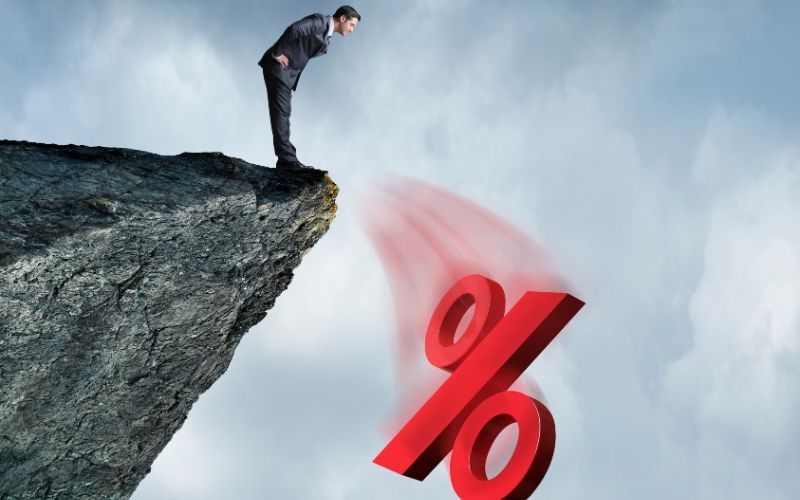
Pacific Debt Relief
750 B Street Suite 1700
San Diego, CA 92101
Hours of Operation
Mon-Thurs: 6am - 7pm PST
Friday: 6am - 4:30pm PST
Saturday: 7:30am - 4:30pm PST
Clients
Phone: (877) 722-3328
Fax: (619) 238-6709
Email: cs@pacificdebt.com
Non-Clients
Phone: (833) 865-2028
Fax: (619) 238-6709
Email: inquiries@pacificdebt.com
"To eliminate debt one household at a time, while placing people first." - Pacific Debt
© 2024 Pacific Debt Inc. dba Pacific Debt Relief, all rights reserved.
California Privacy Policy |  Do Not Sell My Personal Information
Do Not Sell My Personal Information
GLBA Privacy Notice | CDRI Accredited Member
*We do not discriminate on the basis of race, color, religion, sex, marital status, national origin or ancestry.
*Please note that all calls with the company may be recorded or monitored for quality assurance and training purposes.
*Your visit to our website may be monitored and recorded from essential 3rd party scripts.
*Clients who make all their monthly program deposits pay approximately 50% of their enrolled balance before fees, or 65% to 85% including fees, over 24 to 48 months (some programs lengths can go higher). Not all clients are able to complete our program for various reasons, including their ability to save sufficient funds. Our estimates are based on prior results, which will vary depending on your specific circumstances. We do not guarantee that your debts will be resolved for a specific amount or percentage or within a specific period of time. We do not assume your debts, make monthly payments to creditors or provide tax, bankruptcy, accounting or legal advice or credit repair services. Pacific Debt is not a credit repair firm nor do we offer credit repair services. Our service is not available in all states and our fees may vary from state to state. Please contact a tax professional to discuss potential tax consequences of less than full balance debt resolution. Read and understand all program materials prior to enrollment. The use of debt settlement services will likely adversely affect your creditworthiness, may result in you being subject to collections or being sued by creditors or collectors and may increase the outstanding balances of your enrolled accounts due to the accrual of fees and interest. However, negotiated settlements we obtain on your behalf resolve the entire account, including all accrued fees and interest. C.P.D. Reg. No. T.S. 12-03825.
